The future of the world depends on good food. It’s that simple.
- Good food keeps us healthy.
- It helps us reach our potential.
- It strengthens our communities, powers our economies, and protects our planet.
But not everyone gets good food every day – and the way we produce and market food is harming our environment. This has to change.
We are all members of our global food systems, and we all have a responsibility to act.
United Nations Food Systems Summit 2021 is a critical opportunity to accelerate action for a food systems transformation and ensure sufficient, safe, affordable, and nutritious food for all.
Food systems to achieve Good Food For All aim to inspire people to make changes to the ways we produce and consume food.
Action Tracks
The Summit’s Action Tracks offer stakeholders from a wide range of backgrounds a space to share and learn, with a view to fostering new actions and partnerships and amplifying existing initiatives. The Action Tracks are aligned with the Summit’s five objectives. Importantly, the Action Tracks are not separate, nor do they sit in siloes. Each Action Track is designed to address possible trade-offs with other tracks and to identify solutions that can deliver wide-reaching benefits.
Action Track 1
Ensure access to safe and nutritious food for all
Action Track 2
Shift to sustainable consumption patterns
Action Track 3
Boost nature-positive production
Action Track 4
Action Track 5
Danilo Victoriano, Philippines
Harvesting the Technology, Action Track 1
A common problem for farmers is that over-harvesting can result in very low prices for their crops, which can lead them to dump the unsold products. But, with the advance of technology, cell towers can be found even in the furthermost rural towns and barrios so mobile phones can reach even the far-flung countryside, allowing farmers to get price information, giving them more bargaining power in setting prices for their produce and widening their market access to other areas that have demand for their crops.
The technology also allows for improving knowledge of new farming methods, getting the latest weather forecasts, and interacting with fellow farmers. Aside from the benefits of affordable communication technologies, farmers are also benefitting from alternative renewable solar energy

Debdatta Chakraborty, India
Floating Island Vegetables, Action Track 2
The Dal Lake lies at the heart of the city of Srinagar. In the waters, there are a number of floating islands where vegetables and other crops are produced. The morning vegetable market of Dal Lake is all about the buying and selling of these crops. The lake is not only a beautiful spot for tourists, but also a source of sustainable food for the people of the mountain city. I am intrigued by the relation between food and the cultures among the people of the world.
In tribal societies, for the most part, the kitchen serves as the living room. The warmth and the aroma of food provides an opportunity for people to exchange ideas. Sustainable food aims to avoid damaging or wasting natural resources. It also minimises its contribution to climate change throughout the whole production process.

Anthony Into, Philippines
Seaweed Farm, Action Track 3
A seaweed farmer carries seaweed seedlings tied on a rope to be planted in the shallow waters at Pasiagan, Bongao. The seaweed doesn’t need irrigation because it has an unlimited supply of seawater.
As well as providing sustainable, healthy food for local communities, seaweed aquaculture helps to mitigate climate change through carbon uptake, reduction of agricultural greenhouse gas emissions, and protection of shores from coastal erosion.
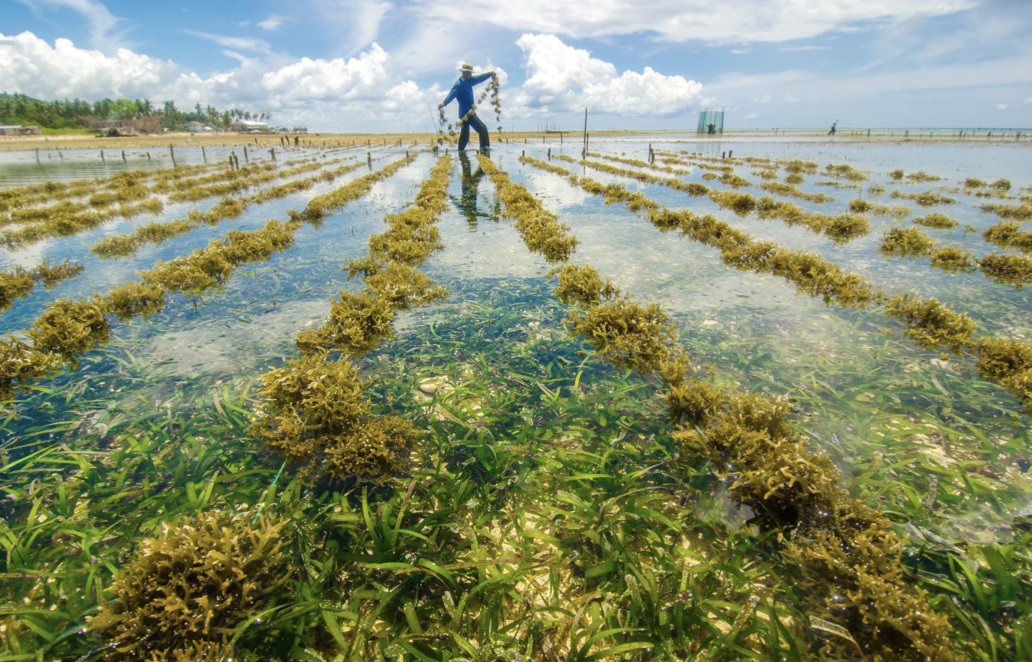
Amitava Chandra, India
Close Group Fishing, Action Track 4
Fishermen with their nets in the Shilabati river in Gangani, West Bengal, India. Outside the rainy season, the rivers coming from the plateau area are low, which reduces the number of fish. This can be tough for the fishing community along the river, as they struggle to maintain a livelihood during these periods.
To address this, they come together as a community, forming a close group in a small area in the shallows of the river. They mutually encircle a small portion of water and place their nets at the same time so that any yield within the circle can be landed in any of their nets.
At the end of each day, they distribute an equal share among themselves. It’s a tried and tested survival technique to ensure sustainable living for the entire community.
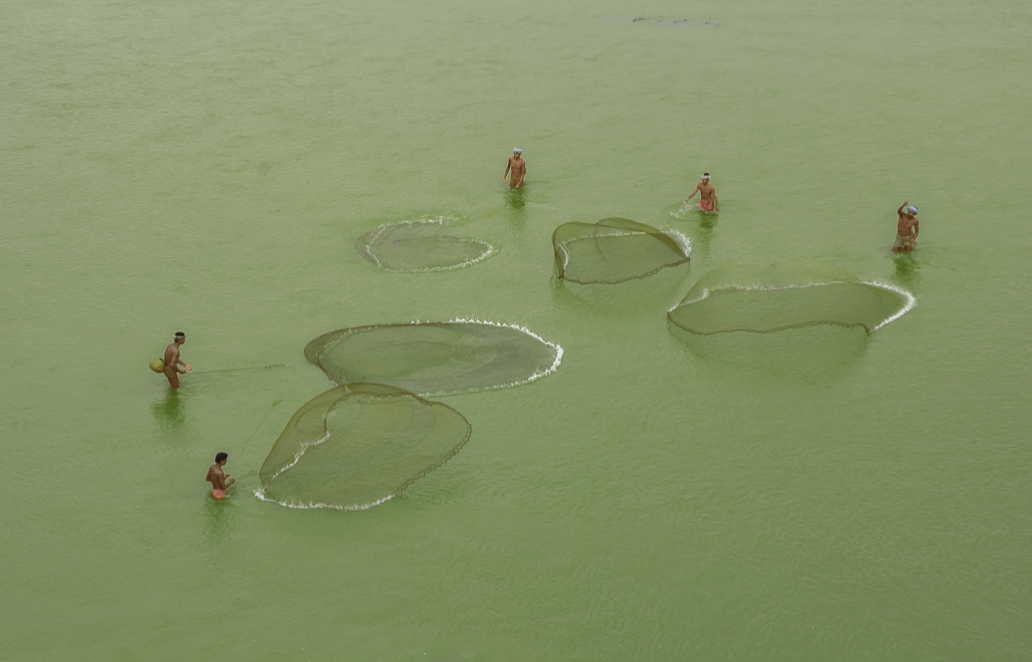
Juan de Dios Morales, Ecuador
The Crab Harvesters, Action Track 5
Resilience is well framed by the traditional crab harvesters such as Ariel, who is the president of the Association of Crab Harvesters of the Sabana Grande community in Guayaquil. The crab harvesters at Sabana Grande are allowed to collect red mangrove crabs in exchange for helping to conserve the 6,500 hectares of mangrove forest. As many of the younger generations migrate to cities, endangering this ancestral practice, there is a move by younger harvesters like Ariel to use technology to attract new harvesters, improve the management of the healthy crab population and continue serving Guayaquil’s crab consumers, which include numerous restaurants.
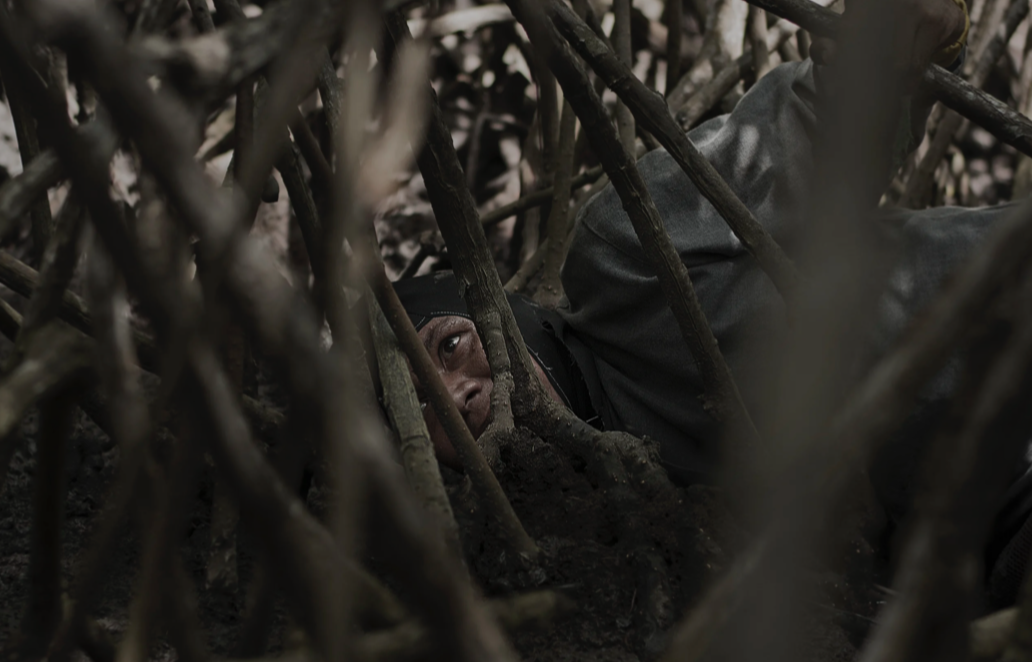
Amitava Chandra, India
Caring for the Nation’s Future, Action Track 1
According to UNICEF figures, nearly 50% of all deaths in children under five are attributed to malnutrition. An understanding of what children eat is at the heart of our ability to prescribe an optimal diet for growth, development, and wellbeing. Undernutrition during the first 1,000 days of life has far-reaching consequences. It is a time when body tissue and brain development is forged, with long-term metabolic consequences. Stunting (short height for a child’s age), being underweight or having a low body weight for their age, and wasting (low weight for height) are the three commonly measured parameters of undernutrition.
Rural areas bear the brunt of this due to economic difficulties and less scientific exposure. So to counter this, a mandatory nutritional development programme for all rural children up to six years old has been introduced, with centres set up in the countryside comprising 50- 60 households. In these centres, alongside elementary education, children are also provided with a balanced diet, maintaining all nutritional requirements according to World Health Organization guidelines, six days a week in every village.
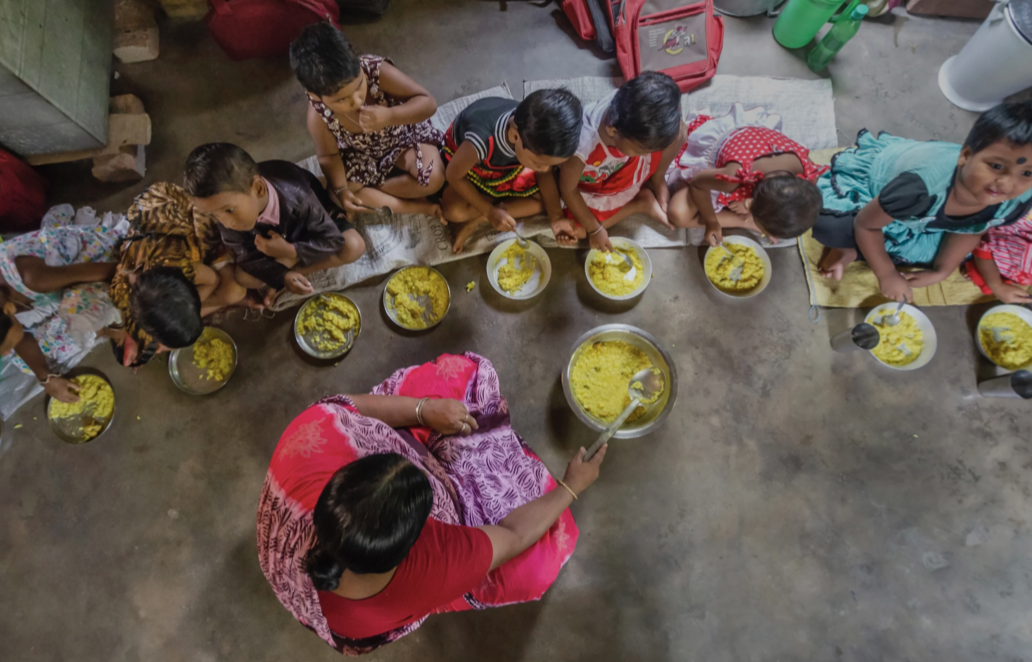
Emman Foranda, Philippines
Home Gardening, Action Track 1
Due to the pandemic, most of the agricultural sector was affected resulting in shortage & limited food supply. People in urban areas learn home gardening, by means of planting vegetables to accommodate the shortage of food supply and at the same time to have nutritious food for the family.
The Philippines is a tropical country and a group of thousands of islands so most of the agricultural products were produced from the abundant supply of our natural resources such as vegetables & seafood. As a food consumer, home gardening is an effective way to sustain a food without depending so much on the food supplier especially in a pandemic situation wherein all food supplies were limited
Food is a necessity for the community. It is essential for everyone to have a sustainable food resources such as urban gardening, home gardening, green structure, water dam for irrigation, so that we can sustain the production and have more food and continuous supply for the community
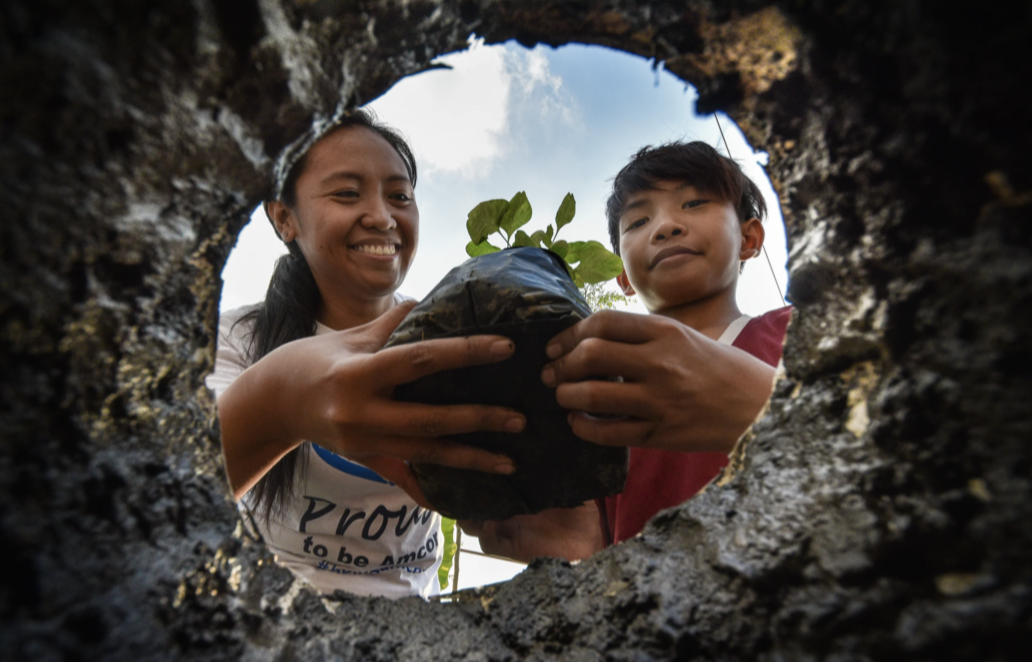
Mohammed Auwal Yakubu, Nigeria
Healthy Food Systems, Action Track 1
Harvesting onions on a family-run farm to provide safe and nutritious food. Onions contain natural sugar, vitamins A, B6, C and E, minerals such as sodium, potassium, iron and dietary fibre. In addition, onions are a good source of folic acid. The aim is to provide healthy food for people while maintaining a sustainable environmental, economic and social food system.
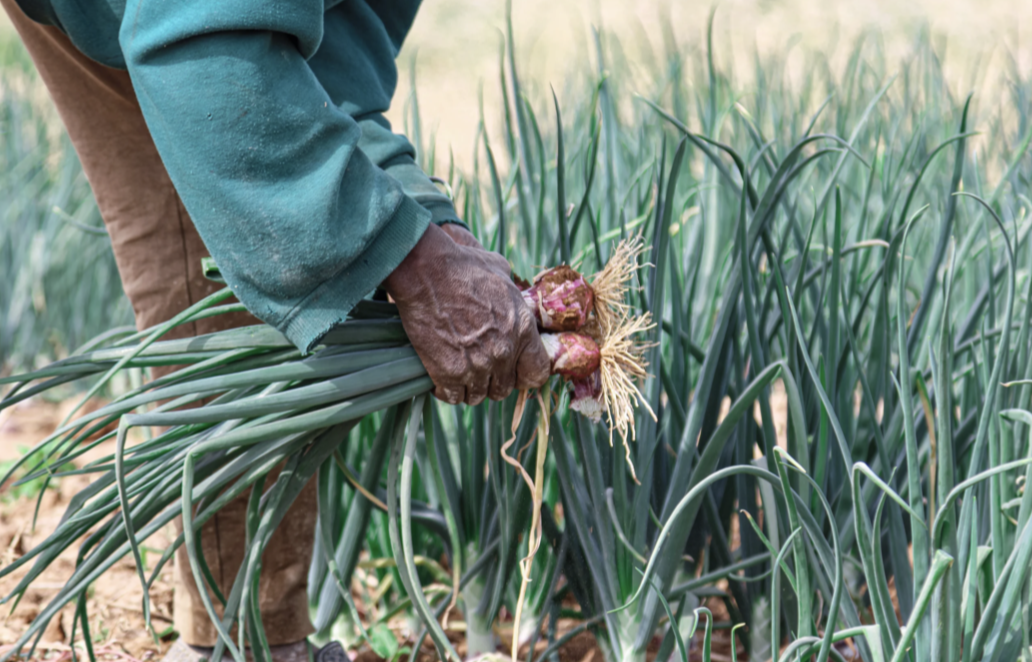
Davine Ondede, Kenya
Securing Food in Arid Areas, Action Track 1
It can be challenging to access adequate quantities of nutritious food in arid and semi-arid regions. Food insecure families typically live in rural areas, are poor, and depend on daily agricultural labour for income. Hydroponics is a method of production where plants are grown in soilless culture with a nutrient-rich solution. This method ensures food security through the availability and accessibility of food because many plants can grow faster in less space.
As no soil is involved, this method is ideal for anyone who has limited access to land. Hydroponics also allows for complete control of the climate, as temperature, light intensification and humidity levels are adjusted for the requirement of the crops. Plants take in their required water, while the excess is captured and trapped back in the system, saving more water. The process also eliminates the need for and use of chemicals. Over time, this enables us to grow clean and healthy foods as fewer insecticides and herbicides are involved.
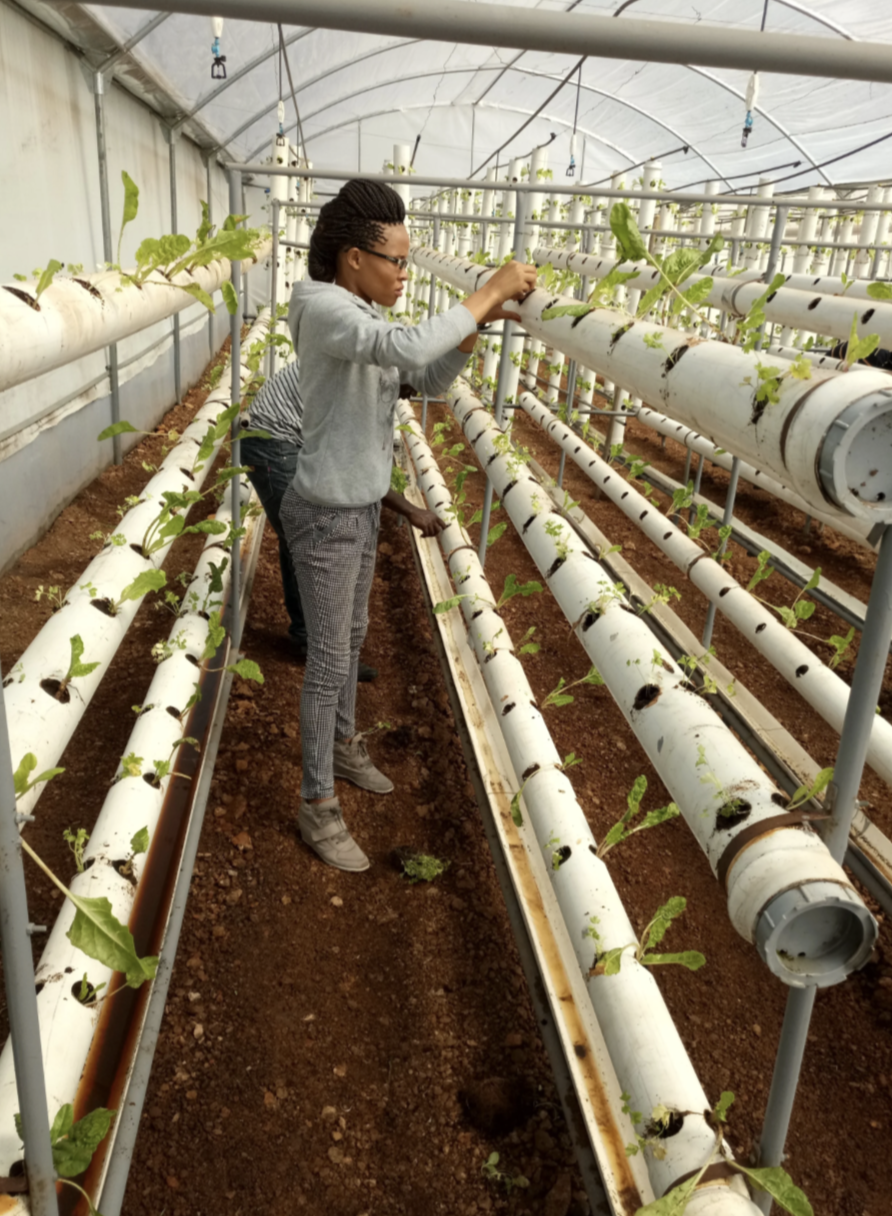
Aimée Wimbush-Bourque, Canada
Zero Waste Kitchen, Action Track 2
As a food writer and former professional chef, regrowing vegetable scraps is a zero-waste initiative in my kitchen. This simple kitchen project started as a way to demonstrate to my daughter how not all vegetable scraps need to end up in the compost bin as many can sprout again if given the chance. I love a good lesson from the kitchen, especially if it promotes food sustainability.
When beets, carrots and turnips tops are placed in water, they send up green shoots, and we enjoy eating these leafy tops. I’ve also regrown celery, romaine lettuce and onions. For me, the goals here are part kid’s science project, part zero waste initiative, and part edible kitchen mini garden. Once you start looking, there are a thousand little ways we can make environmentally friendly choices in the zero-waste kitchen. Regrowing vegetable scraps is just one of them.
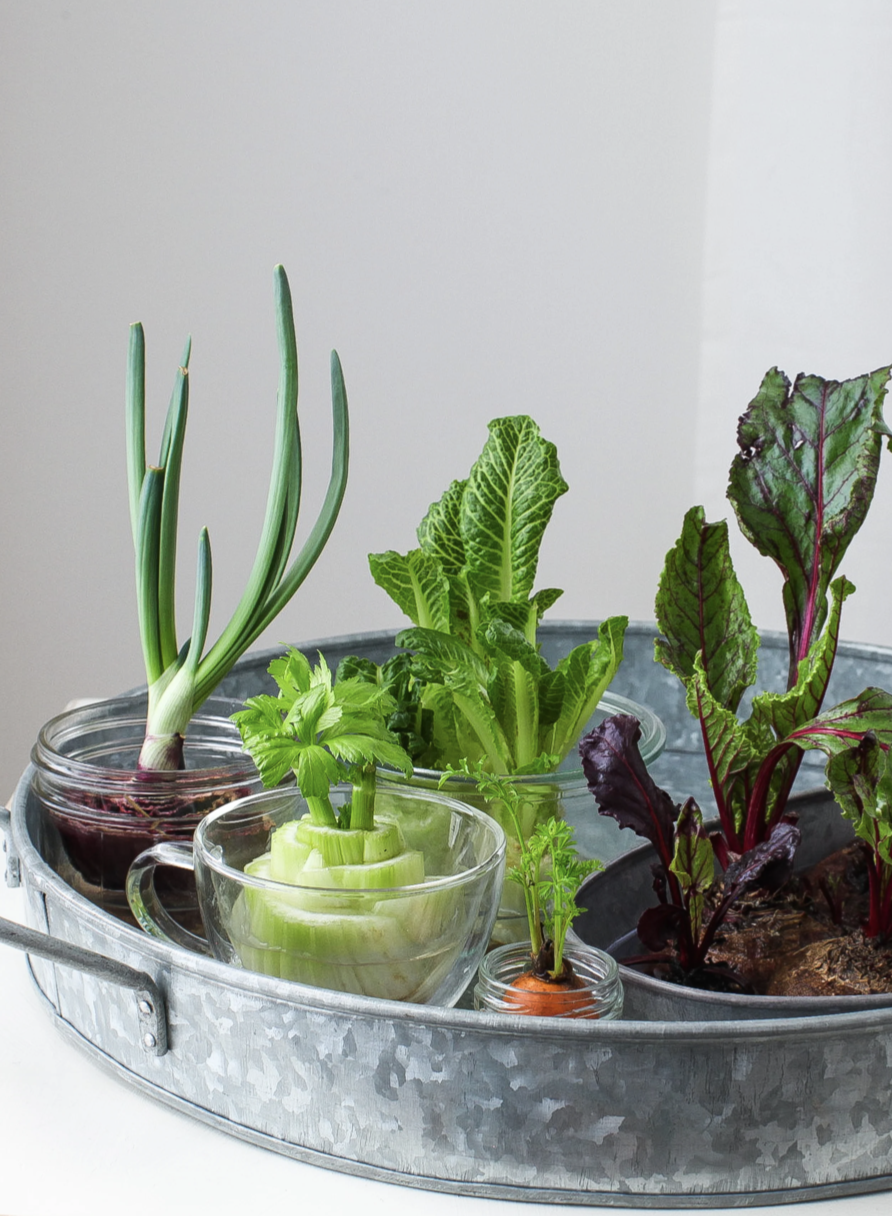
Eliya Uzia, Tanzania
Protecting Against Disease, Action Track 2
Chinese seedlings are planted at one of the greenhouse demonstration sites in Dar es Salaam. The seedlings grow better in plates or trays before transplanting them to ensure their safety from pests and diseases in the soil. A seedling can stay in the tray for up to three weeks depending on the availability of water and the mineral supply cycle. Tanzania is focusing on agriculture as a means to achieve economic growth. Its plans incorporate private sector engagement, including the Southern Agricultural Growth Corridor of Tanzania initiative, a public-private partnership to increase agricultural business investments in the country’s southern corridor. Those working in all steps of the production chain, as well as consumer awareness, have the potential to reduce the burden of foodborne diseases. The setting and enforcement of food safety standards in raw materials will also mitigate their exposure to contaminants.
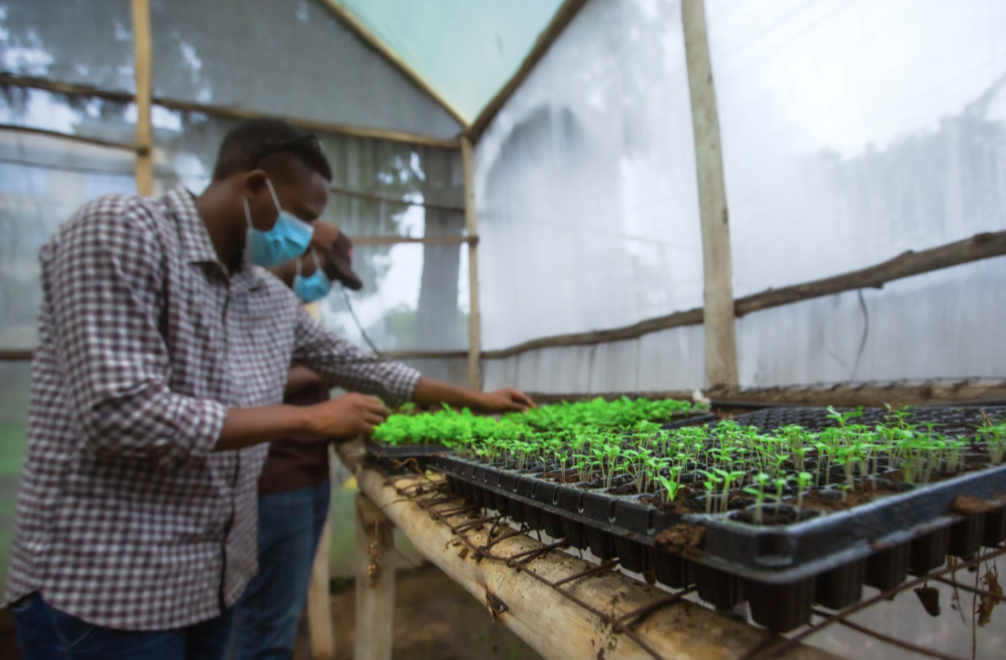
Rabin Chakrabati, India
Saplings, Action Track 2
In this photograph by Rabin Chakrabarti from India, a lady in the district of Hooghly, West Bengal India is reaping saplings of cabbage to maintain the supply of food products.
“The more food we produce”, says Rabin, “the more we can fight for sustainability!”

Subir Kumar Dutta, India
Coconut Seller, Action Track 2
Coconut is very nutritious and beneficial for health. And, in the hot Indian climate, coconut water can be a relief from dehydration. In rural India people often make a living by selling coconuts to nearby towns, working hard day and night to collect them. The coconuts are also supplied to the big oil industries of India, which use coconut oil for cooking and health products.
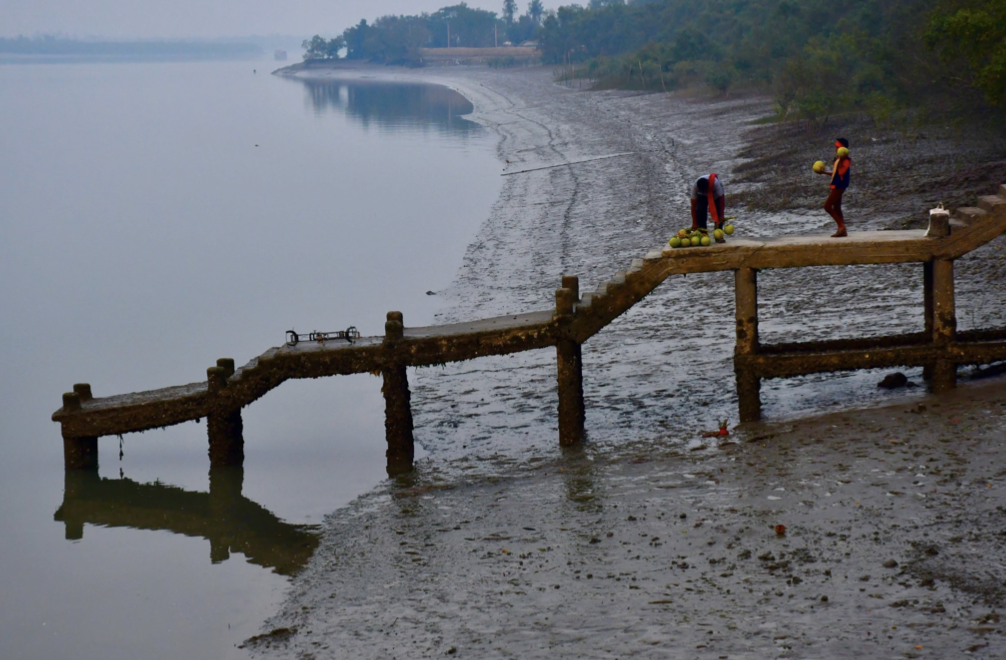
Gerson Turelly, Brazil
Virtuous Circle, Action Track 3
The capital city of the state of Rio Grande do Sul, Porto Alegre was the first city in Brazil to have an organic food market. Today, the city has several organic markets that take place weekly in different parts of the city. Organic farmers show us that it is possible to produce healthy food without compromising the environment. In fact, their produce improves health and generates income that goes beyond the producers’ subsistence, creating a virtuous circle of health and economics, from producers to suppliers, to consumers.
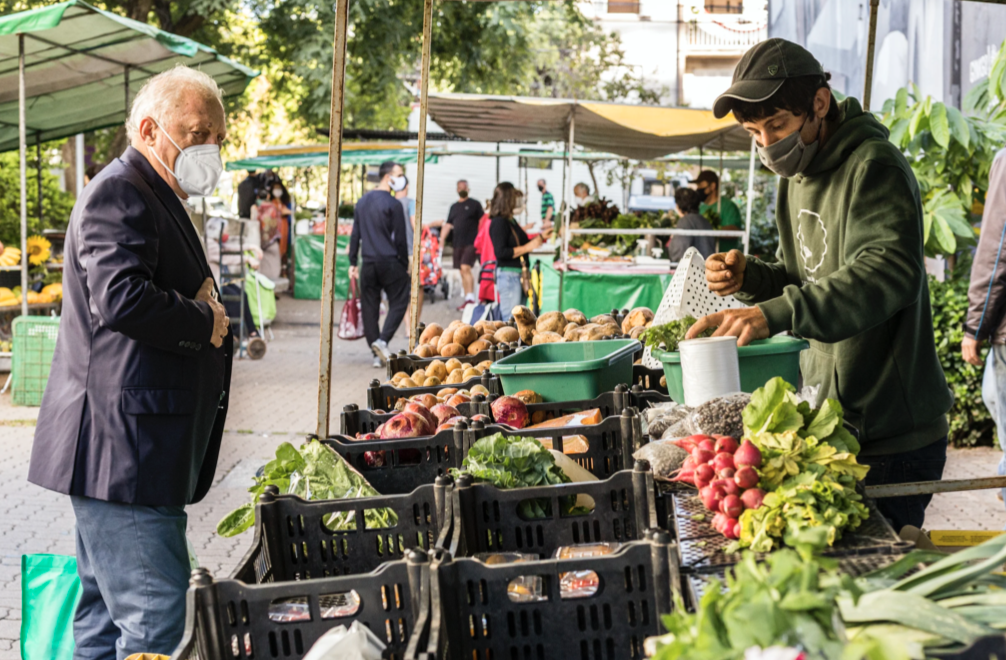
Shibasish Saha, India
Waterlily Harvesting, Action Track 3
Local farmers in the wetlands of rural Bengal collect water lilies and lotus during the monsoon season to sell in the market. The water lilies are eaten in curry with rice, and their properties help to keep body temperature low. Local boys use a boat to carry the lilies and lotus to dry land.
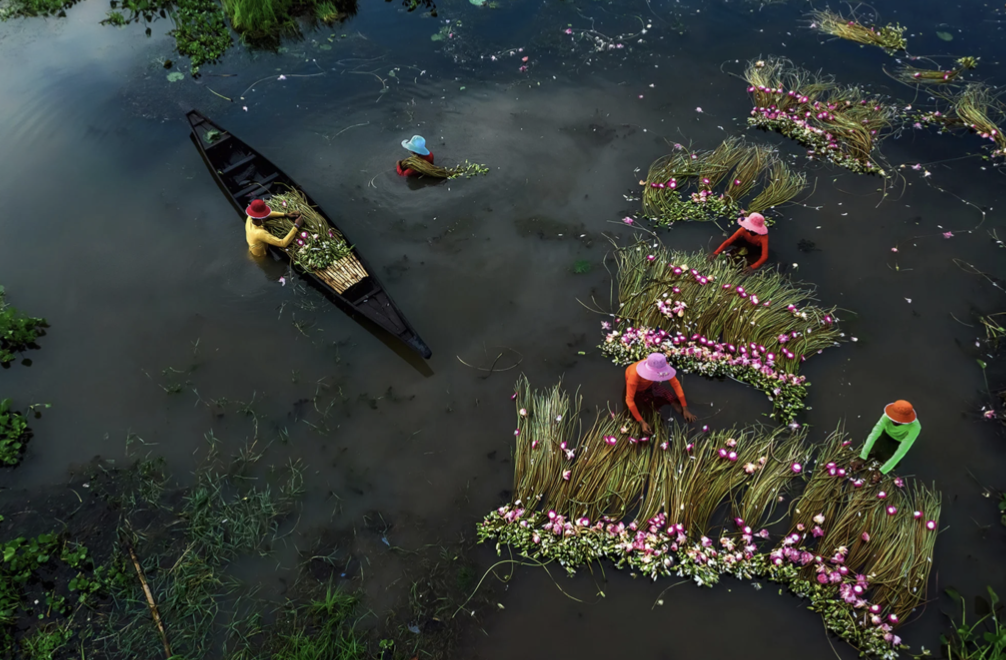
Sudip Maiti, India
Up on the Roof, Action Track 4
A man nurtures a ridge gourd plant that he has harvested on his rooftop. As the suburban areas are constantly being urbanised, agriculture is threatened. Only a handful of people consume the best of the products and waste a large portion while the rest of the population lacks basic nutrition. Food is not a luxury, it’s a necessity. In a country like India where the population is 1.2 billion and food distribution is unequal, people in urban and suburban areas can adopt rooftop farming to balance food demand with the supply chain.
Natural waste from vegetables can be used as fertiliser for organic farming. And it can be a step for some towards self-employment and a sustainable economy. In our culture, we have a deity dedicated to food.
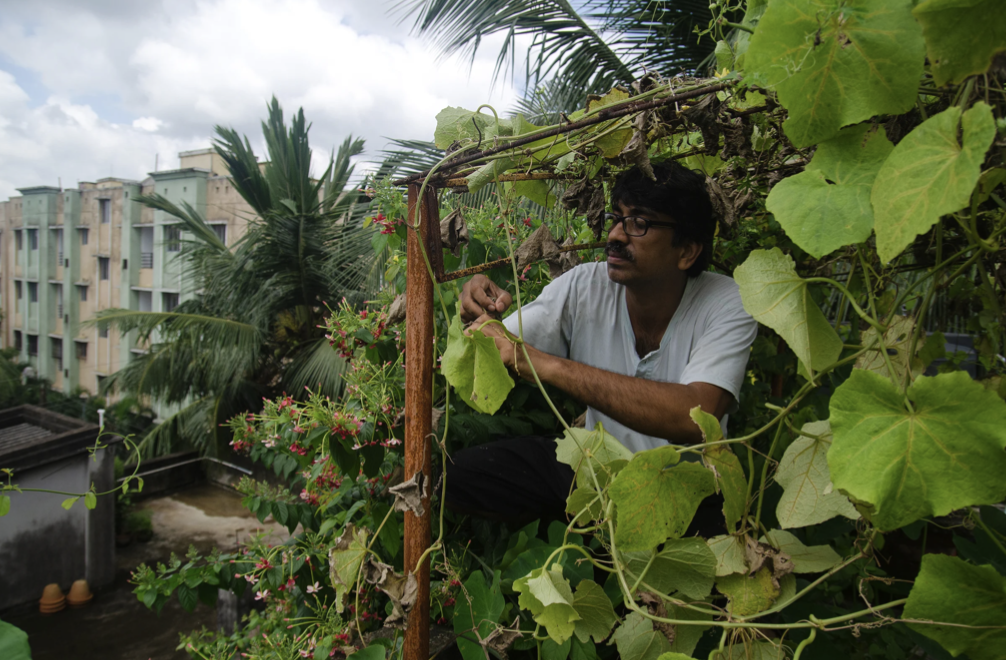
Azim Khan Ronnie, Bangladesh
Spice of Life, Action Track 4
Countless chilli peppers surround labourers in the Bogura district in the north of Bangladesh. More than 2,000 people work in almost 100 chilli farms in Bogura to supply local spice companies with chillies for use in their recipes. Chilli peppers are a major part of the Bengali cuisine popular in Bangladesh and are used as part of a combination of spices for various meat dishes, including chicken and beef.

Anthony Into, Philippines
Fish Drying in Pangasinan, Action Track 4
At Santiago Island, Pangasinan, in the Philippines, dried rabbitfish, also known as danggit, is prepared by first splitting the fish open, cleaning and salting it, and then spreading it out on drying racks under the sun. Drying is a conservation technique that safely enables fish to have a longer shelf life. This woman’s family has been running this small-scale business since she was young. As well as providing them with a living, it has also helped her and her husband send their children to school. Danggit-making supports around half of the families on the island, where it is considered a sustainable livelihood.
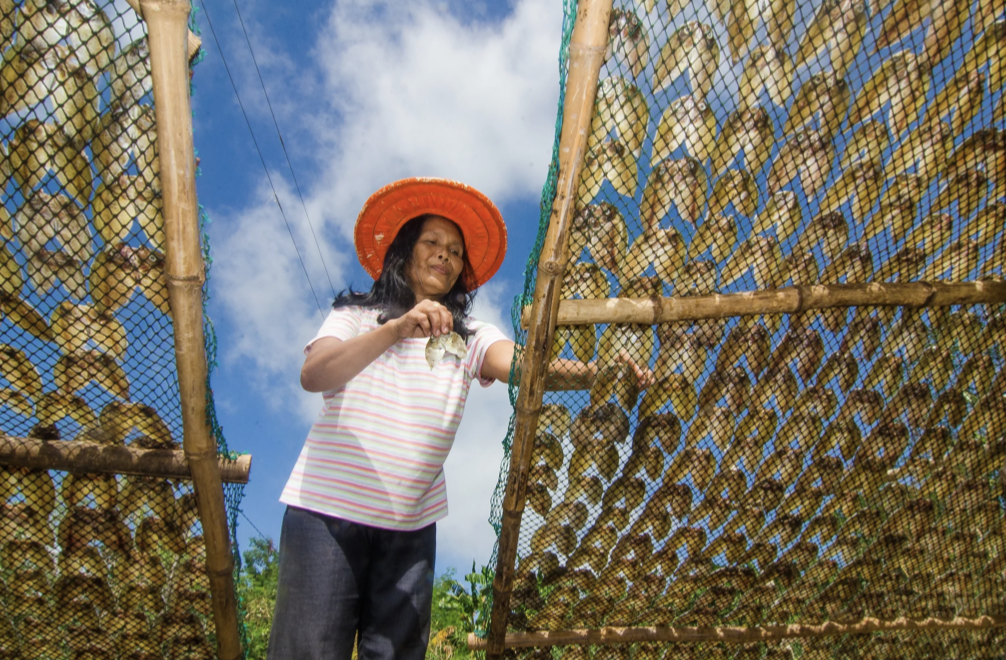
Anthony Into, Philippines
Hydroponic Systems, Action Track 5
A woman checks on her rows of lettuce planted in styrofoam cups. She practices hydroponic systems in her lettuce farm, growing plants in water enriched with nutrients. The process is water-efficient and can be done easily in narrow spaces. It often uses controlled environment agriculture, in which temperature, humidity, carbon dioxide and light are controlled, so plants can be grown year-round. Continued propagation of farm crops means a non-stop food supply.
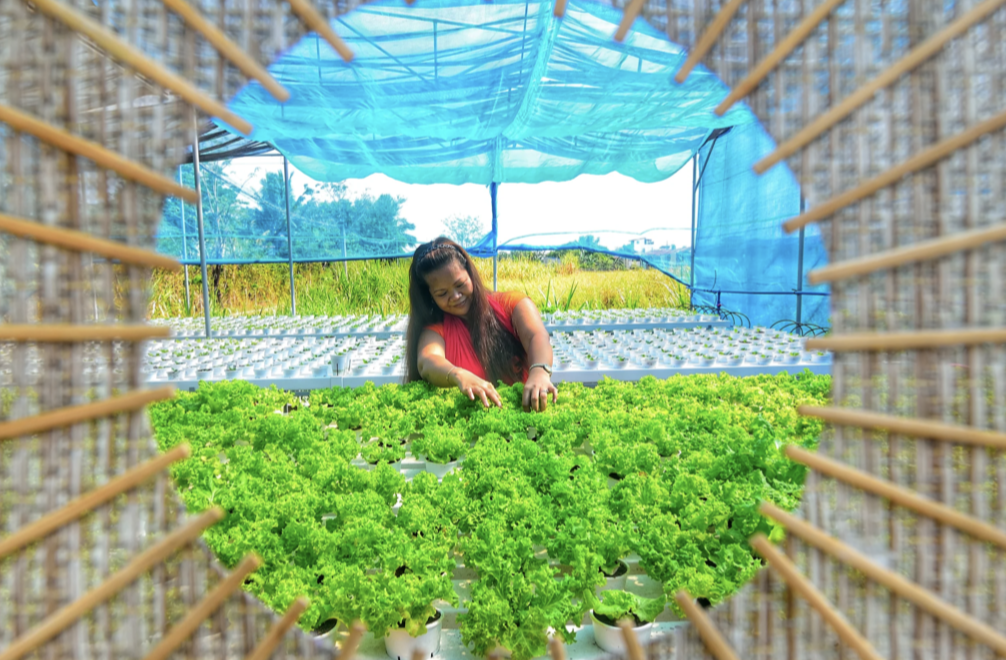
Danilo Victoriano, Philippines
Maintaining a Mangrove Forest, Action Track 5
The Bakhawan Eco-Park is a 220-hectare man-made mangrove forest located in New Buswang, Kalibo. It was created in 1990 when local government and NGOs transformed the polluted, muddy shoreline into a reforestation project to prevent floods and storm surges during bad weather and to mitigate the effects of climate change.
The park is a home to fish and different species of mangrove trees and serves as a sanctuary for several different bird and marine species. The park not only addresses the community’s flood problems but also gives a sustainable livelihood to local people, who are mainly fishing families, as the yield of fish and crabs dramatically increased when the park was created.
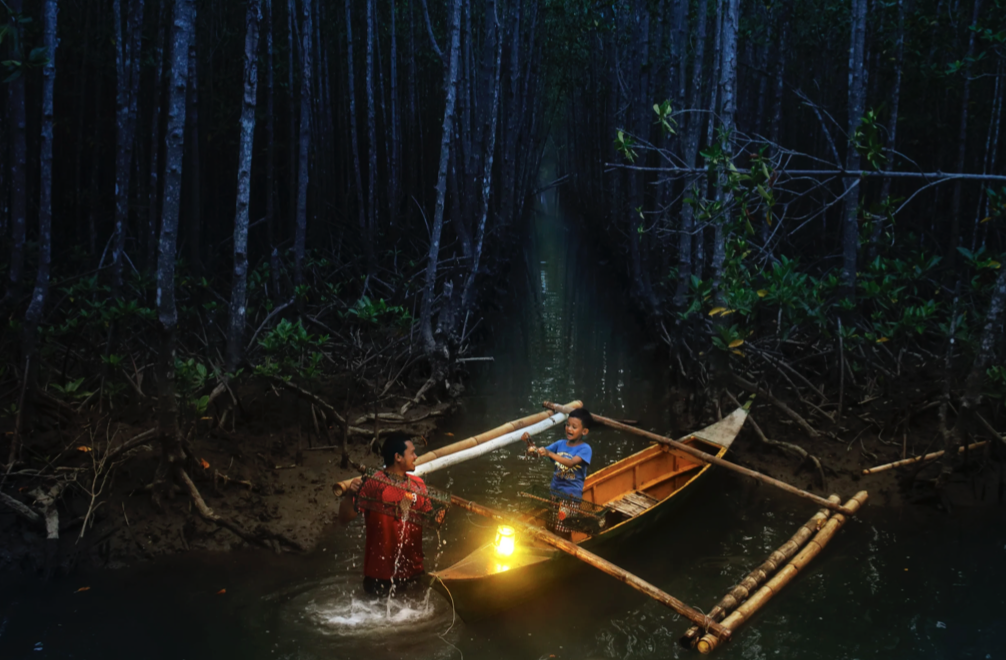
Sudipto Das, India
Shallow Water Fishing, Action Track 5
A group of women from remote villages in the West Midnapore district of West Bengal practice sustainable shallow water fishing throughout the year. The fisherwomen gather at the Shilabati River during summertime, as the water level goes down significantly. They use traditional fishing nets, which are made of four bamboo sticks and a net.
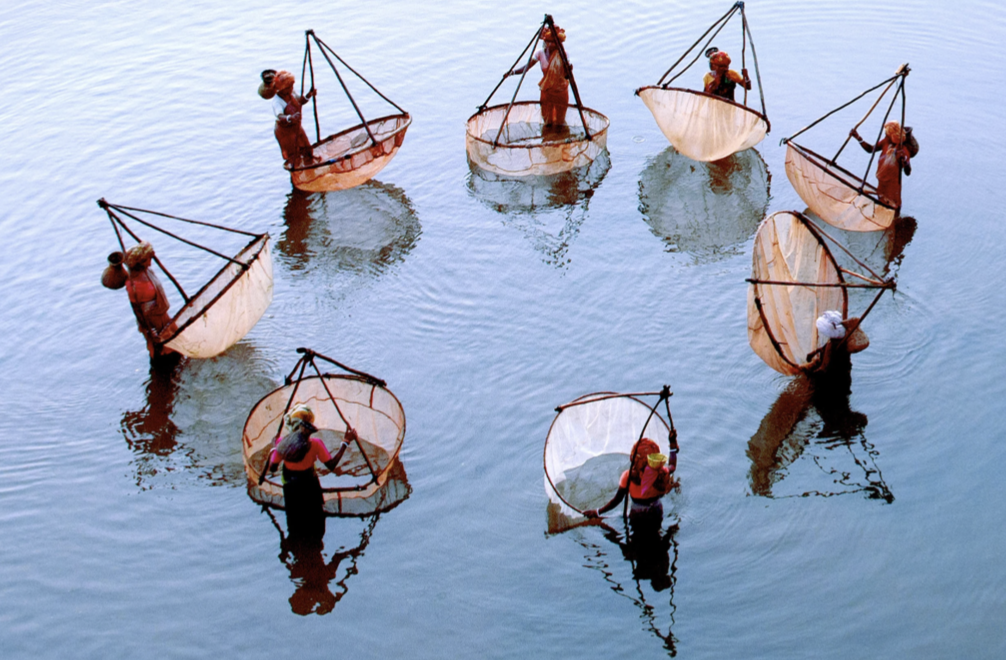
Azim Khan Ronnie, Bangladesh
Floating Farms, Action Track 5
Farmers in Pirojpur, Bangladesh, grow their crops in the river on long, thin, floating vegetable gardens. Each strip of land is between 60m and 90m long, and farmers cultivate up to 300 types of vegetables, navigating the channels between them by boat. A centuries-old tradition to combat the loss of land due to flooding, the gardens rise and fall with the swelling waters of nearby rivers.
The floating farms cover around 400 hectares and contain an extraordinary array of crops including beans, beet, pumpkins, okra, aubergine, cucumber, red amaranths, gourds, turnip, cauliflowers, turmeric and chillies.





 “The first essential component of social...
“The first essential component of social...




 London |
London |  20–21 June
20–21 June Register here
Register here 





 .
#Nutrition is...
.
#Nutrition is... .
.


 Food policies must go beyond the...
Food policies must go beyond the...



 years on, @IFPRI remains a leading...
years on, @IFPRI remains a leading...



